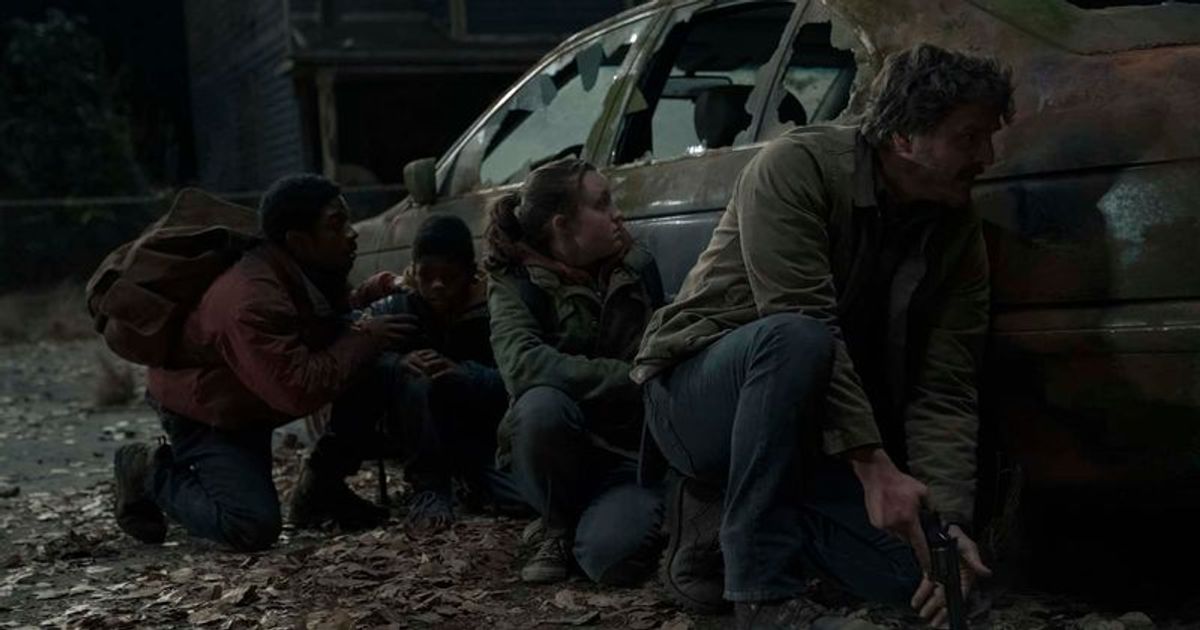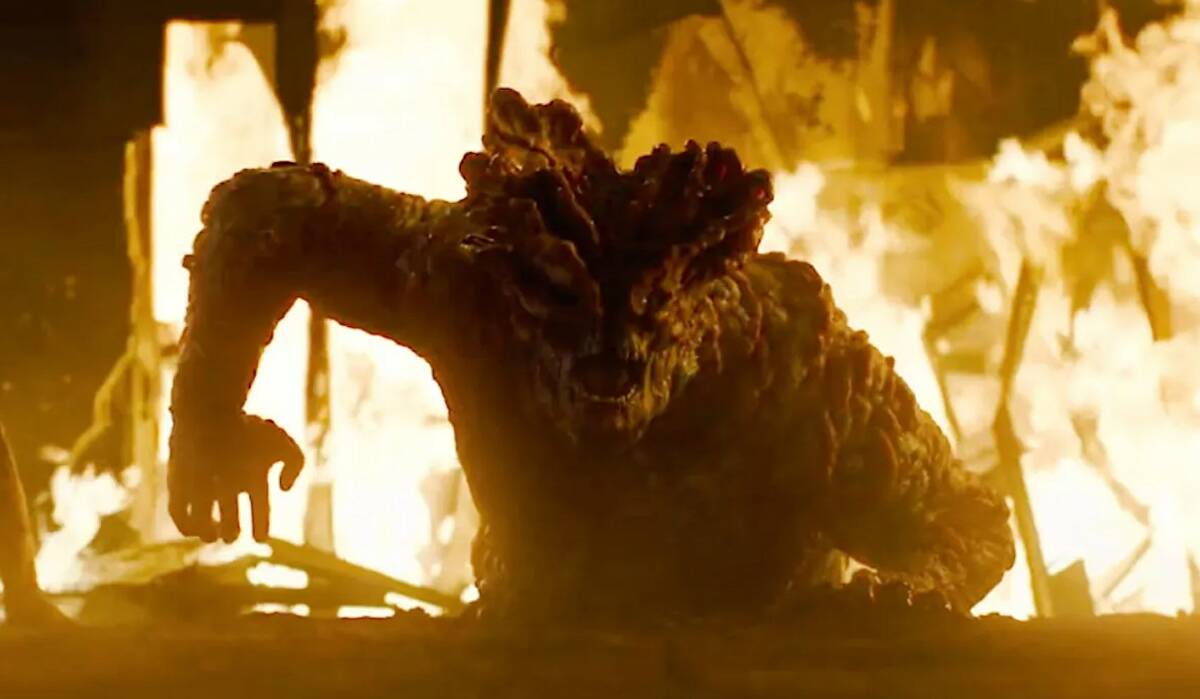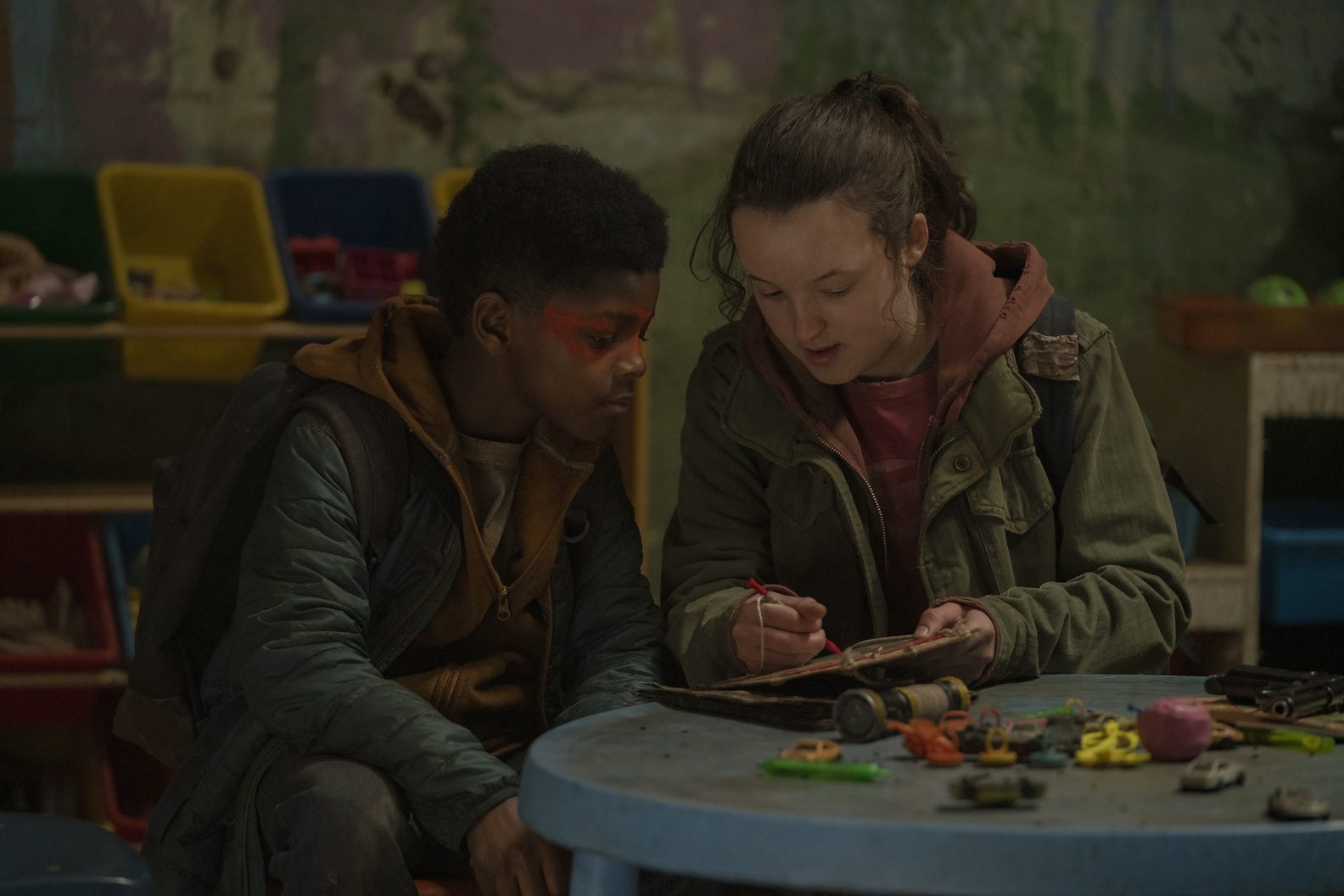REVIEW: The Last of Us – Season 1, Episode 5, “Endure and Survive”
Any marginal increase in quality in last week’s episode of The Last of Us was eradicated and regressed in this week’s episode 5, “Endure and Survive.” The justifications and explanations that episode 4 required of “Endure and Survive” are not explained or developed cohesively. The one reason for a major coincidence that “Endure and Survive” offers merely creates a brand new, narrative-eroding contrivance. Episode 4 is worse in retrospect because of the many failings of “Endure and Survive.” The other prevalent issues of The Last of Us are still very much present in this episode, such as extreme and unnecessary bloat, wooden acting, cheap and shallow dialogue, and an almost allergic aversion to basic character development – of its lead characters no less than its supporting ones. The one moment for interesting character growth supported by legitimate motivation is robbed from the character at the last moment for a cheap creepy moment.
However, “Endure and Survive” stands above its predecessors in its lack of cohesive continuity, basic justification, lack of setup and payoff, constant telling but not showing, and complete abandonment of logic. If several monumental coincidences are required for the basic plot to occur, then the narrative structure of your story is built upon a foundation of sand, much like the town where the final conflict of the episode occurs.
From the standpoint of fidelity to the source material, only the final scene can be called an adaptation of the video game. There are occasional set designs that have commonality with the game. However, the content, characters, and story bear little resemblance to the all-time great video game which inspired this television show. This is not The Last of Us in the least, and it is not good storytelling.
**Spoilers**
The plot of “Endure and Survive” is simple, almost entirely uneventful, and borderline pointless. Joel and Ellie team up with Sam and Henry to sneak out of the city through tunnels that might be infected with zombies but aren’t before they’re confronted by a lone sniper who calls in reinforcements from the freedom fighters. In the ensuing battle, a bunch of random and luck-driven zombies appears out of nowhere to rescue the main characters from the freedom fighters, giving them a chance to escape. The episode ends with Sam getting infected and trying to kill Ellie before Henry has to put him down, a decision that he cannot live with, resulting in his suicide. That final scene is relatively accurate to the source material. That is where the comparison to the video game almost completely ends.
Like its predecessors, “Endure and Survive” is personified by gargantuan bloat. This slow episode accomplishes very little for the plot, character development, or even basic action. Scenes last far longer than they need to, resting upon long, drawn-out takes of the characters slowly walking, barely saying anything of note. Additionally, Henry constantly endeavors to involve Sam in whatever conversation, whether or not Sam is even paying attention. Usually, Sam goes off to the corner and draws on his pad, ignoring everybody else. Despite this, Henry has to grind a battle strategy conversation to a screeching halt and frantically wave to get Sam’s attention before signing to him, waiting for a response, signing back, then telling Joel and Ellie a single word that could have been delivered on its own without Sam’s involvement. This does nothing to build the characters; it only pads the runtime further. If Henry had just said the word “tunnels,” “Endure and Survive” would have been at least three minutes shorter. It’s an utter waste of time, like much of this episode.
The first fifteen minutes of the episode show how Henry and Sam got to the meeting point with Joel and Ellie from the end of “Please Hold My Hand.” We find out they were hiding, and then they saw Joel and Ellie arrive. Absolutely no information in that 15-minute intro wasn’t provided in the previous episode or later within this one. It’s pointless and serves only to bloat this episode even further. The one thing it attempts to do is explain the coincidence of Sam and Henry knowing exactly where in this massive city – and on which floor – Joel and Ellie made camp. It does solve that coincidence, but it creates a whole new one. How, in an entire city, did Joel and Ellie crash into a building right next to Sam and Henry’s hiding spot? That is a narrative-destroying contrivance upon which the episode’s plot rests precariously.

As with episode 4, the worst character in “Endure and Survive” is Kathleen, the leader of the freedom fighters. Her characterization and portrayal in episode 3 left massive questions, like: What are her basic qualifications for her leadership position? Why are people following her? Why does no one else seem to share her vendetta against Henry? The answers to these questions are occasionally found within the episode. Still, the few times they pop up, they tell rather than show the audience. In fact, the showing directly contradicts what the audience is being told several times. Not a single other person among the freedom fighters seems to care about Henry a single iota, even though this episode confirms that Henry is responsible for their former beloved leader’s death. We are told they care about this, but not even Perry, Kathleen’s right-hand man, shows any interest in his death. The other questions are only answered in a single conversation between Perry and Kathleen, where he just heaps a load of baseless praise upon her, positively affirming her and calling her the bestest ever. It is entirely unbelievable that anyone would be following this psychotic woman who has shown zero intelligence or leadership skills.
The middle portion of the episode features Henry, Sam, Joel, and Ellie venturing into the tunnels beneath the city, believed to be entirely overrun with infected. For some inexplicable reason, there are zero infected to be seen, resulting in a near-pointless set of scenes that further drags out the runtime. The choice to have no infected here, despite their presence during this portion of the game, is baffling. Nonetheless, it falls in line with this show’s near aversion to any action or high-energy scenes whatsoever. If the first 3/4 of the episode were cut down into a single conversation between Henry and Joel about their plans before skipping to the action scene at the end, nothing of value would be lost.

Finally, after drudging through extensive bloat, empty dialogue, and vapid character development, the longest action sequence of the season so far arrives, and it is only a few minutes long. The main characters happen to be walking down the only street visible from the sole freedom fighter’s vantage point; they happen to be seen by this freedom fighter in the dark, and the freedom fighter happens to be a horrific shot, further straining credulity with unfounded luck. Joe quickly dispatches this lone sniper before Kathleen and her army arrive far sooner than is humanly possible, considering the distance and how recent the radio transmission of their position was. This is where the episode’s most idiotic and illogical moment happens.Right before Kathleen gets the revenge she so hopes for, a truck that had crashed into a house after Joel shot the driver suddenly starts sinking through the house’s foundation into apparently infected tunnels beneath the surface, unleashing the most coincidental and lucky arrival of an infected army to save the day.
Why weren’t the infected in the actual tunnels where they were believed to be? Are the infected suddenly dwarfs mining out tunnels throughout the land? Cordyceps vines throughout the ground are a massive leap from tunnel digging. How is the town standing if a little weight on the foundation of a home is enough to create an enormous crater? Why does the infected army just happen to be right where the heroes need them to be for a quick rescue? A T-Rex popping out of the ground would have been just as believable. It is utterly illogical nonsense. That house must have been built upon sand if just a little weight was enough to bring it crumbling down. Tunnels that close to the surface would have made the ground incredibly unstable, resulting in countless sinkholes everywhere the tunnels lead. The scene felt like a five-year-old was playing with his action figures and suddenly yelled with glee, “And then, like, an army of mean zombies pop out of the ground to save the day!” Changes from the source material aren’t always bad, but when the source material easily justifies the presence of an infected army at this point in the story, and the adaptation decides to create this contrived idiotic nonsense instead, that decision warrants mockery.

Once that nonsense is over, the show’s longest action scene to date arrives, and it’s only a couple of minutes long. “Endure and Survive” was marketed as the big Bloater episode, meant to satisfy fans and show an epic confrontation with the Bloater. Instead, the Bloater pops out, grand slams a few people, and rips the guy’s head off before disappearing from the scene. The big Bloater episode had a grand total of ten seconds of Bloater.
At this moment, the episode finally had a chance for character development. Throughout “Endure and Survive,” Henry is portrayed as a soft-spoken coward who had ratted on his fellow survivors, yet had never committed any violence against the living or the infected, in self-defense or otherwise. This change from the video game is a strange one. However, if it had been made to facilitate a big showdown and character arc in the finale, where he mans up and kills Kathleen himself in defense of his brother, it would have been understandable. However, this chance for an arc is robbed from him. He makes no move to defend himself against Kathleen throughout the encounter and is only saved by a creepy little girl zombie swooping in to steal the kill from him; it’s a narratively unfulfilling resolution. It appears as if these writers are allergic to the basic precepts of competent writing and characterization.
The action suddenly ends there. Instead of delivering on the promise of great action and a fearsome Bloater encounter, the writers opted for a slow and drawn-out snoozefest built upon a foundation of sand, with no logical progression or character development. The rest of the episode is relatively accurate to the source material, featuring Sam’s conversion to a zombie and Henry’s murder-suicide with his brother. The only thing of note from this last section is an insane decision from Ellie. She doesn’t inform the adults about Sam’s infection; instead, she attempts to cure Sam of his infection with her “magic blood” by cutting herself and smearing her open wound over his zombie bite. At least wipe your blood onto a different surface to coat his wound; don’t engage in blood-on-blood contact! That is disgusting. She might be immune to the Cordyceps infection, but who knows what else Sam has? It’s basic cleanliness not to do something this insane. Sam had leukemia previously, so his immune system isn’t strong. There’s no knowing what diseases he could give Ellie due to blood-on-blood contact. The best ending to this series so far, and a rather humorous end, would be Ellie contracting some disease from such an insane decision and dying suddenly.

Easily the worst episode of The Last of Us is brought to a close there. No semblance of logic, continuity, character development, or good writing is apparent within this slog of an episode. It is entirely a waste of time. It could have been ten minutes long and delivered the same information with the same amount of action, and even those 10 minutes are rife with unfounded coincidences, cheap dialogue, flat performances, and an utter lack of intelligence. “Endure and Survive” makes its part one, episode 4, far worse in retrospect. Even those watching this show like a Transformers movie, where they are forced to turn off their brain to have fun, will find themselves falling asleep, as so very little happens in “Endure and Survive.”
The Last of Us – Season 1, Episode 5, “Endure and Survive”
Plot - 0.5
Acting - 2
Progression - 0.5
Production Design - 8
Adaptation - 1
2.4
Why?
No semblance of logic, continuity, character development, or good writing in the slightest is apparent within this slog of an episode. It is entirely a waste of time.







